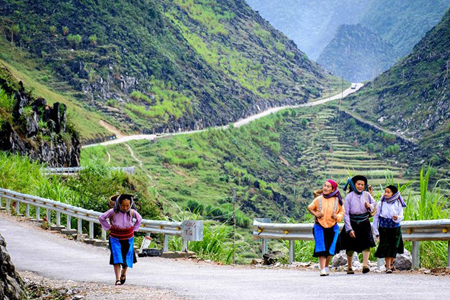Dong Van Karst Plateau is located on an altitude of 1,000m-1,600m, with an area of nearly 2,356km2, belonging to 4 districts of Quan Ba, Yen Minh, Meo Vac, Dong Van of Ha Giang Province.
Dong Van is one of Vietnam special limestone areas, housing prominent im-prints that depict the development of the earth's crust. Up to 80% of the karst formations of Dong Van Plateau are limestone formed by environment con-dictions and different development stages of nature. Thanks to weather changes and Dong Van's geo-diversity, the karst evolution has created "rock gardens" and "rock forests" of diverse forms in the area. The cave system in Dong Van Karst Plateau is also product of karst evolution process and interesting tourist sites.
Dong Van Plateau has a unique and di-verse mountainous geo-ecosystem. Prim-itive forests here have been rather undamaged, habiting many rare floral and fauna species.
Not only that, Dong Van also contains unique cultural values of 17 ethnic minority groups such as Mong, Dao, Lo Lo, Tay , Nung... The mountainous market sessions with unique manners and cuss
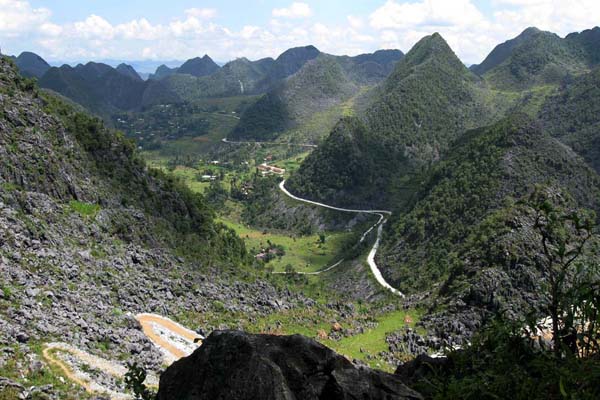
How to get Dong Van
From Ha Giang City, visitors travel on National Highway 4C for 43km to Quan Ba. Continuing on this highway through Can Ty pass, pine forests, steep drops, deep ravines, sharp turns, visitors will reach to Dong Van Karst Plateau.
Climate
Climate is divided in two distinct seasons rainy season (from May to October) and dry season (from November to April). The annual average temperature varies between 24 and 28°C. In winter, the temperature is some-times down to -5°C. toms, festivals of the ethnic minority people creat bold marks of the karst plateau.
The best time to visit Dong Van is the spring. Tourists are hit by wonderful landscapes composed by yellow cai (kale) flowers and pink peach flowers in full blossom, mossy tiled roofs of stilt houses, dark green rocks and blue skies. Far in deep valleys covered by pure white plum flowers in full blossom hear remote sounds of khen (pan-flutes) of Mong people. The season covers rugged rocks and mountain peaks with its bright colors. All blend with each other to create a wonderful painting in the north pole of the country.
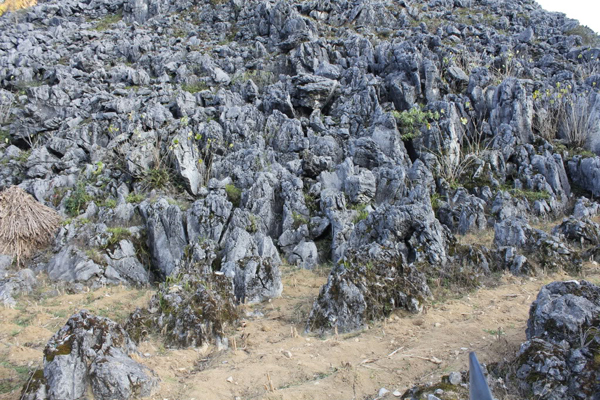
On 3 October 2010, in Lesvos (Greece), Dong Van Karst Plateau was recognized as official member of Global Geoparks Network (GGN) for its prominent values on landscape, palaeobiology, geology, geomorphology and local culture. Dong Van Karst Plateau has become the first geo-park of Vietnam and the second one in Southeast Asia (after Langkawi Geopark in Malaysia).
OUTSTANDING VALUES
A survey conducted by scientists from the Viet Nam Institute of Geosciences and Natural Resources revealed the finding of 13 fossil - geological formations in Dong Van, including Chang Pung, Lut Xia, Si Ka, Bac Bun, Mia Le, Si Phai, Toe Tat...
Geological Value
A survey conducted by scientists from the Viet Nam Institute of Geosciences and Natural Resources revealed the finding of 13 fossil - geological formations in Dong Van, including Chang Pung, Lut Xia, Si Ka, Bac Bun, Mia Le, Si Phai, Toe Tat, Lung Nam, Bac Son, Dong Dang, Song Hien, Hong Ngai, and Lan Pang, of which, Chang Pung is the oldest one with date of 540 million years.
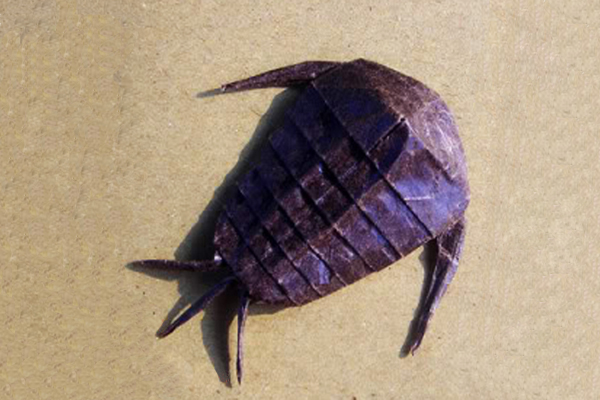
In addition, 19 paleontology groups were also discovered in Dong Van, including Bra- chiopoda (Taycuon), Tabulata (San ho vach day), Tetracoralla (San ho bon tia), stro- matoporoidea (Lo tang), Trilobita (Bo ba thuy), Polybranchiaspis liaojiaoshanensis (Co co), Foraminifera (Trung lo), Tentaculies (Vo non), Conodonta (Rang non), Pelecy- poda (Chan riu), Gastropoda (Chan bung), Cephalopoda (Chan dau), Bryozoans (Dong vat dang reu), Crinoidea (Hue bien), Scle- rotesta (Vo cung), Ancient Crustacean (Giapxacco), Hydrilla verticillata (Thucvat thuy sinh), Spirulina (Tao), and Chitinozoa. The paleontology groups have helped scientists draw a complete picture of development history in terms of geology of Dong Van Karst Plateau in particular and northeast Viet Nam and south China in general.|
Geomorphology Value
The tectonic activities created canyons in Dong Van Karst Plateau, particularly in limestone area. Among karst canyons in Dong Van, Tu San is the most beautiful and majestic canyon. From Ma Pi Leng Pass beside Tu San Canyon, tourists can observe the wonderful folds of Devonian limestone.
Thanks to weather changes and Dong Van's geo-diversity, the karst evolution has created "rock gardens" and "rock forests" of diverse forms in the area, such as Khau Vai rock garden (Meo Vac) where tourist can contemplate the peaks of rocks in the shape of different kinds of flowers, Lung Pu rock garden (Meo Vac) with animal-shaped rocks such as tiger and dragon, Van Chai rock garden (Dong Van) with round flagstones arranged like thousands of black sea lions leaning one another getting some rest on the beach. However, found commonly here are ranges of mountains running one after another to form pyramids heading up to skies. A system of caves and grottos found in the Dong Van Plateau provides a proof of the evolution of karst with Rong Cave in Sang Tung (Dong Van), Kho My Cave in Tung Vai (Quan Ba), En Grotto in Van Chai, Dong Van)...
Ecological Value
The scientists have also evaluated Dong Van Plateau as having a unique and diverse mountainous geo-ecosystem. Primitive forests here have been rather undamaged, habiting many rare floral species, including Burretiodendron hsienmu (Nghien), Taxus Wallichiana Zucc (Thong do), Amentotaxus hatuye- nensis (De tung soc nau), Cephalotaxus hainanensis {Dinh tung), Podocarpus pil- geri Foxw (Thong tre la ngan), Cupressus funebris (Hoang dan ru)... especially over 40 species of orchids.
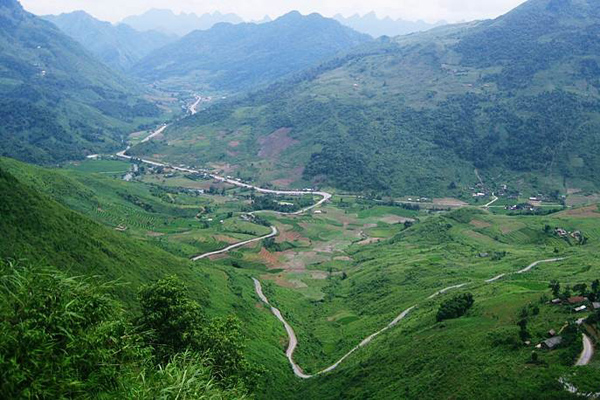
Dong Van Plateau also has a rich diversity of habitat for fauna as scientists have spotted over 50 species of wild animals, birds and reptiles in the site such as Capri conrnis sumatresis (Son duong), Rhinop- ithecus avunculus (Vooc mui hech), Sus cristatus (Lon rung), Garrulax canorus (Hoa mi)...
Cultural Value
Dong Van Karst Plateau also contains unique cultural values of 17 ethnic minority groups such as Mong, Dao, Lo Lo, Tay, Nung... Since long time, the ethnic groups in Dong Van have had rich cultural and spiritual life. It is expressed clearly through the cultivation method in the small rock caves or mountain sides. They also use rocks to build houses; hold water and land... To Dong Van, tourists can see the rock gardens dotted with green corn fields and golden rice fields.
Each ethnic group in Dong Van has its own and unique cultural identity ex-pressed in the traditional Festivals such as Long Tong Festival (the festival to go the field) of Tay, Nung ethnic groups; Cap Sac Festival (adult ceremony) of Dao ethnic group; Gau Tao Festival of Mong ethnic group...
Besides, the plentiful and diversified cultural life of ethnic minority people is also expressed through khen sound of Mong people; coi songs of Tay people; phuon singing of Nung, Giay people; duo love songs of Mong, Dao people...
One of the highlights creating own nuances for each ethnic groups in Dong Van Karst Plateau is traditional costume. The costume of Tay, Nung... is quite simple in design, color while costume of Lo Lo, Mong, Dao... is colorful and plentiful in patterns and designs. Each costume has become real art work expressing the lifestyle and culture of each ethnic group.
Perhaps, mountainous market sessions are the place containing boldest culture space of ethnic minorities. The markets are usually held once a week on week-ends and they start from early morning. The markets as Pho Bang, Dong Van, Lung Cu, Sa Phin... are noisy, boisterous by colorful brocade costume of boys, girls of Nung, Dao, Mong, Lo Lo... Local products sold at market exchange are not just the crystallization from the labor of the mountainous people, but also reflect separate cultural features of each ethnic group. Apart from exchanging and trading goods, highland people go to the markets also to talk or meet. Therefore, the market has become culture exchange place of ethnic minorities.
The outstanding place to hold the markets in the karst plateau is Dong Van Ancient Quarter with about 40 houses built in Chinese architecture style since the early 20th century. Unlike Old Quarter in Ha Noi or Hoi An Ancient City, dew and wind in the north pole of Viet Nam create extremely unique difference for Dong Van Ancient Quarter. The soil walls, stone pillars, wooden handrails oryin-yang roof tiles nestled in the rocky mountain range... are still immortal to challenge to time. In the evening of the 14,b and 15th days of the lunar month, the old houses in the quarter hang red lanterns, sell local traditional products. The ethnic people in neighboring areas gather at here to meet, exchange, perform art and enjoy thang co dish and corn wine.
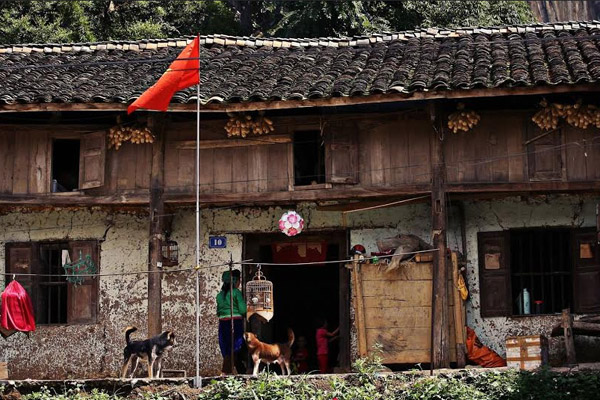
Archaeological Value
Archaeological excavations in Dong Van proved this is one of the places where keep traces of prehistoric culture. Archaeologists discovered 2 remains of the Paleolithic Age in Can Ty (Quan Ba) and Pho Bang (Dong Van) and 2 ones of the Neolithic Age in Bach Dich and Yen Minh Town (Yen Minh District). In addition, a pair of antique bronze drums of Lo Lo ethnic people in Dong Van is typical relic of Dong Son culture more than 2,000 years ago.
LUNG CU FLAG TOWER - OUTSTANDING DESTINATION
Lung Cu Flag Tower is located at 1,700m above the sea level, in the peak of Rong (Dragon) Mountain, Lung Cu Commune, Dong Van District - the north pole of Viet Nam, about 20km from Dong Van Town. The way to the flag tower inludes 283 rock steps. The flag tower is 33.15m in height; 3.8m in diameter; the tower body is decorated relief of Dong Son bronze drum surface; the tower sole is stuck relieves describing the daily life of ethnic minority people in the karst plateau. Plug in the 12.9m flagstaff is a national flag with an area of 54m2, representing for 54 ethnic groups of Viet Nam. At the foot tower, there is a commemorative house, where displays production tools, costumes and cultural products of the ethnic groups in Ha Giang.
From Lung Cu Flag Tower, tourists can view a wide border area of Viet Nam, there are Nho Que River winding through the high mountain ranges, the terraced fields stretching along the mountainsides, the villages of Mong, Lo Lo, Tay, Pu Peo...
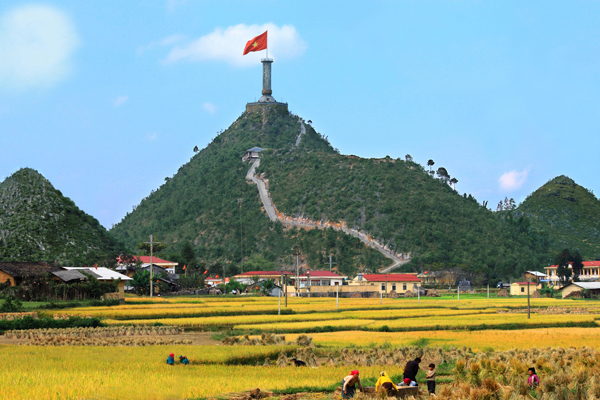
Ma Pi Leng Pass - Tu San Canyon
Ma Pi Leng Pass has a length of over 20km, belongs to 3 communes of Pai Lung, Pa Vi, and Xin Cai (Meo Vac District). At the foot of the pass is Nho Que River formed more than 5 million years ago. In the centre area of Ma Pi Leng Pass, there is Tu San Canyon with the depth of about 800m, the length of 1.7km, cliff slope of 70-90°. This is the deepest and mightiest canyon in Viet Nam and Indochinese Peninsula. Looking down Tu San Canyon from Ma Pi Leng Pass, tourists will admire spectacular beauty of mountains, deep green Nho Que River winding long pass foot, immense green corn fields or mossy stilt houses hidden in clouds and mountains...
According to local language (Quan Hoa), 'Ma Pi Leng" means "horse nose" to say about the dangerousness of the pass. In the past, the only means of transportation to over Ma Pi Leng Pass (with the 2,000m height of the peak) was horse, in 1959, the State decided to develop the road route named Hanh phuc (Happiness) connecting Ha Giang City with Dong Van and Meo Vac districts with the length of 200km, of which including Ma Pi Leng Pass with the length of 24km. Ma Pi Leng promises great tourism potential by not only the spectacular, magnificent beauty of nature, but also the people living here still preserved almost intact the traditional culture, the festival bolding colors of the karst plateau region. Ma Pi Leng is the ideal destination for tourists to explore and understand highland culture.
Khau Vai Rock Garden
Khau Vai Rock Garden with an area of about 1,000m2 is located along the two sides of road from Lung Pu to Khau Vai in Khau Vai Commune, Meo Vac District, from Meo Vac Town about 15km to the southeast. In this area, karst process develops deeply into calcareous Karst layer, creating attractive shapes; thanks to geologic conditions and specific climate, upper sides of rock peak often have the shape of flowers, flower buds, twig with diversified charms depending on diversified imagination of viewers. This is a unique product of nature and being conserved and maintained to research and enjoy.
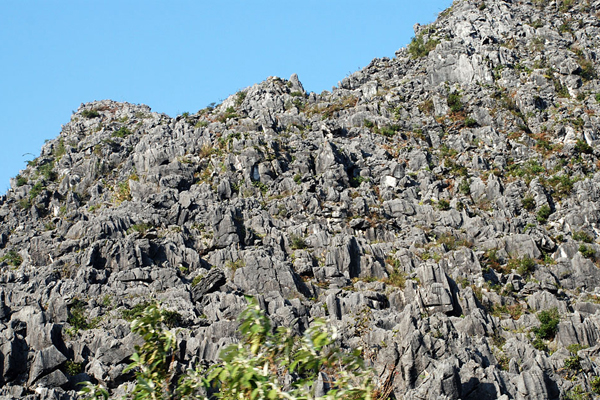
Kho My Cave
Located in Kho My Hamlet, Tung Vai Commune, Quan Ba District, about 20km to the west of Tam Son Town, Kho My is one of the most beautiful caves in Dong Van Karst Plateau.
According to Mong language, "Kho My" means a beautiful girl. The Creator gave for Kho My sizeable stalactite columns with many interesting shapes. The thin white mists of the karst plateau often crept into every corner of the cave, surrounded stalactites make the beauty of Kho My more mysterious and charming. Kho My on the mountain slope are prettified by curving terraced fields along with the houses' roof of Mong people loomed in the fog. Here is an attractive destination for tourists who love exploring caves and learning about cultural identity of the mountainous region.
Vuong Family's Palace
Located in Sa Phin Valley, Sa Phin Commune, Dong Van District, Vuong Family's Palace is also the bastion of Vuong Chinh Due (1865-1947) - who used to be regarded as a Meo (1) King governing Dong Van Plateau region.
Vuong Family's Palace with an area of over 1,000m2 was built during 8 years in the late 19th and early 20th centuries. Most building workers are local Mong people and Hui people from Yunnam (China). In the front of the palace, there is a gate built by stone. Surrounded the palace is 2 stone walls with loopholes. The walls are about 60cm thick, 2.5 to 3m high with cherry and bamboo trees between the two walls.
The palace includes 4 transversal houses and 6 lengthwise houses - all having two floors and a total of 64 rooms. The houses were built in the style of the Qing Dynasty (China). The house walls are made of stone, with the wood base, the wooden floor, pillars and columns. The roof is made with tiles and its front roof made with tube tiles decorated with the "longevity" (Tho) character.
In main house, the horizontal lacquered board with the scripts saying "a politically stabled border area" (Bien chinh kha phong), presented by King Khai Dinh (1885-1925) to the Vuong Family in 1913 are also stored. In addition, inside the palace, there are areas of kitchen, cistern, storehouses of food, weapons.., especially a stone bathtub in goat milk of Vuong Chinh Due.
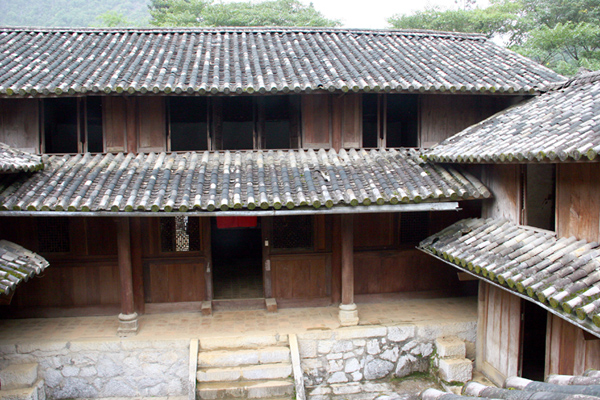
Especially, all the parts, whether made of stone or wood, are carved meticulously with designs of the dragon, phoenix, bat... which represent for prosperity and longevity of a family of high rank.
Lung Cam Tren Village
Lung Cam Tren Village located in the centre of Sung La Valley, Sung La Com-mune, Dong Van District is home to 3 ethnic groups of Mong, Lo Lo and Han. Of which 85% are Mong people.
Sung La Valley brings specific beauty of the karst plateau with boundless mountain ranges; fresh green corn fields; colorful flower gardens; romantic tree ranges; hundred-years-old ancient houses and brilliant brocade colours of highland boys and girls. Materials to build houses in Lung Cam Tren were produced on the spot, from soil to build wall to surrounded rock fence. All houses are about 100 years old. The moss-covered layer on the roof's house like as expression for the survival, the challenge with time.
Apart from ancient houses have been conserved intact, people in Lung Cam Tren currently store many cultural quintessence expressed the specific traditional festivals, folk songs, dances, instruments. Besides, the production tools reflecting daily life activities of the people will create interesting unexpec tations for tourists.
With wild beauty and unique cultural identity, Lung Cam Tren Village has be-come the inspiration for many artists. Especially, it chose as the background for the film "Story of Pao"- the film awarded "Golden Kite" of the Viet Nam Cinema Association.
Khau Vai Love Market
Khau Vai Love Market is held once a year in 26th evening, 27th morning of the third lunar month at a hill in Khau Vai Hamlet, Khau Vai Commune, Meo Vac District. Khau Vai Love Market is a special market, because there are not buyers and sellers.
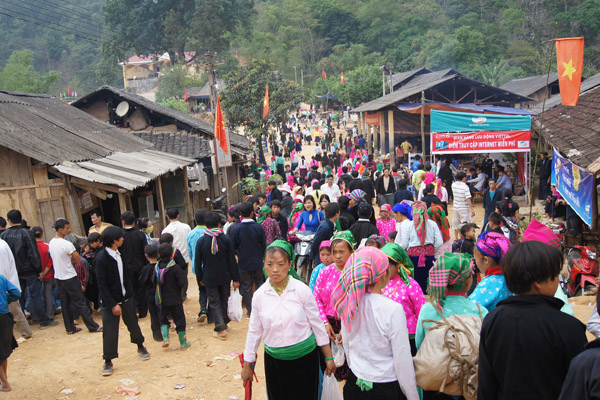
The boys and girls go to the market only to meet, talk or say love. At first the mar-ket is traditional market night of Mong ethnic minority group and for people who miss their love to meet. But now, Khau Vai has become the market session to make a date for all ethnic minority people of Mong, Dao, Giay, Tay, Nung... from young to old people. Young people go to the market to find their love, wife/husband through khen sound, their sing; people got married to meet their old friend. Everyone is eagerly to wait for the market days which each year only once.
Khau Vai is a unique market-where people express their love with each other and is also specific cultural feature of mountainous ethnic minority groups in Ha Giang.

